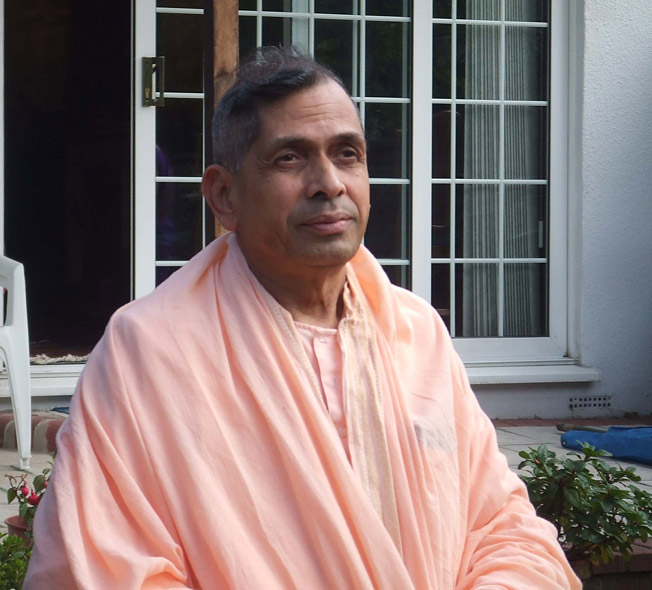
Swami VEETAMOHANANDA
Meditation (dhyana in Sanskrit) is the act of maintaining, in an elevated state of consciousness, a stable train of thought on a unique object.
“Tatra pratyaya ekatanata dhyanam” “Meditation is maintaining a single and unchanging wave of thoughts at a specific level of consciousness.” Only thinking of an object is not meditation. The act of thinking only involves manipulating a series of waves of thought. Patanjali calls these waves of thoughts vrittisor pratyayas.
The mind has two tendencies. The first is to constantly move from one wave of thought to another. This mental tendency to latch onto different objects is called dispersion – sarvarthata. The second tendency is to concentrate: the mind focuses on a single object. Meditation – dhyana– consists of consciously focussing the mind.
Patanjali lists five conditions for a seeker to be able to enter the state of dhyana:
First, the seeker must have faith – shraddha, meaning faith in the supreme goal of life and also faith in the possibility of attaining this goal.
Second, the seeker must possess both the enthusiasm and energy to continuously exercise the power of his/her will.
Third, the seeker requires the support that comes from a faithful and accurate memory – smriti.
Fourth, the seeker must be immersed in concentration.
Fifth, the seeker must be aware of the Self.
To preserve a stable train of thought, it is important to have a firm memory. However, meditation is not a normal process of memorization. We are generally capable of remembering many things, and some of us even have an excellent memory. But, it is difficult to have a firm memory while focusing our mind on a single thought, and it is precisely this capacity that must be developed in order to meditate.
Normally, memory involves recalling past experiences. To remember is thus to remain in the past. Every day, we spend a lot of time either remembering the past or imagining the future. The present is so fleeting that, as soon as an experience occurs, it already becomes part of the past. Meditation is not about remembering the past; it is instead about maintaining a memory of the present. Meditation is also not about trying to prevent the present from sliding into the past, into forgetfulness. It is about fixing the process of memory entirely on the present moment.
Seekers observe a representation of a Deity, then close their eyes and try to remember what they’ve seen. This action only leads them to memorise an event that took place in the past. It makes meditating mechanical, repetitive. It frays the nerves and opens the door to all the memories of the past. This is why such seekers cannot progress, even after years of practice!
True meditation is the direct interaction with a conscious image. When you see your beloved in front of you, you live with them in the present. For meditation to resemble this, we must look into our hearts and “see” a living image there. This only becomes possible once we are able to focus the light of our consciousness into the depths of our heart. It is there that we can constantly observe the movements of our thoughts, and preserve the awareness of our self.
Beginners can find this challenging, which is why it is recommended to begin with prayer and worship. These are acts that by definition take place in the present. Prayer, for example, cannot slide into the past without this being noticed. Indeed, prayer ceases as soon as concentration is lost. In fact, true spiritual prayer requires intense effort in order to be established in the present moment. Even when addressed to an unknown Being, prayer enables you to live in the present. Worship makes this Being feel more real and enables you to stay longer in the present. When this interaction in the present, between the soul and the image, is interiorised and intensified, it becomes meditation.
Thus, true meditation is an act that always brings the mind back to the present. In addition, the act of meditating is the flow of a constant current from our consciousness of our ‘self’ (the ‘self’ being the subject) towards the image in our mind (the ‘image’ is the object). When this movement or impulse becomes stable – and you may have observed this during our guided meditation sessions – the object ceases to change. This movement/impulse originates from within the individual self and fixes itself onto the object.
This impulse—of the individual self—is the will. It is true that, when we try to meditate, memories flood the mind and we feel powerless against this. However, it is good that we allow the mind to wander in this way. And in teaching our will to fix the mind onto a single object, the image inside of us will become constant.
This is the way we confine our memory to the present. And this is meditation.



